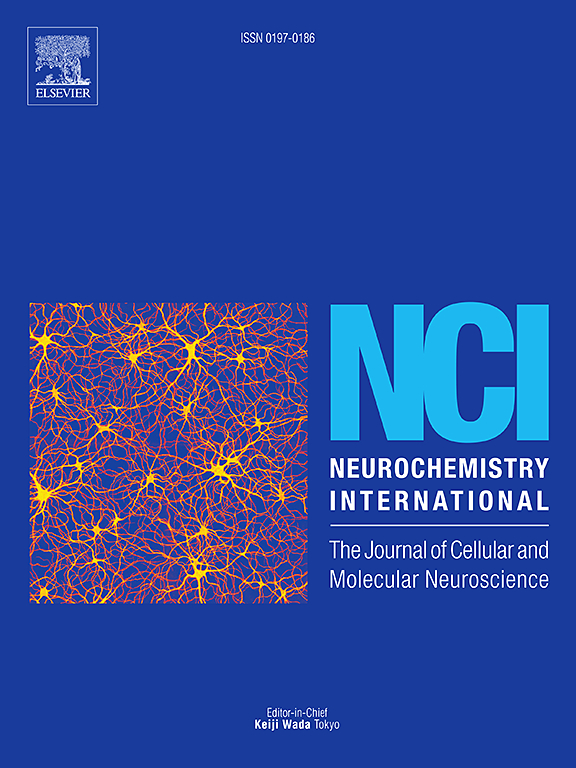Bioactive ROS-responsive nanotherapeutics attenuate intermittent hypoxia-induced cognitive impairment via NRF2/KEAP1/HO-1 signaling
IF 4
3区 医学
Q2 BIOCHEMISTRY & MOLECULAR BIOLOGY
引用次数: 0
Abstract
Obstructive sleep apnea (OSA) is characterized by chronic intermittent hypoxia (IH), which induces oxidative stress and neuronal apoptosis, ultimately leading to progressive cognitive impairment. This study investigated the neuroprotective potential of a reactive oxygen species (ROS)-responsive nanotherapeutic, namely TPCD nanoparticles (TPCD NP), synthesized through the conjugation of Tempol and phenylboronic acid pinacol ester to β-cyclodextrin, in both in vivo and in vitro models. In rats, intravenous administration of TPCD NP improved memory performance as assessed by the Morris water maze test, and preserved hippocampal neuronal morphology. TPCD NP significantly reduced intracellular ROS content and malondialdehyde (MDA) levels while restoring antioxidant capacity, including superoxide dismutase (SOD) and glutathione (GSH). Apoptosis was attenuated, as evidenced by the downregulation of Bax and cleaved caspase-3, and the upregulation of Bcl-2 expression. Mechanistically, TPCD NP enhanced the nuclear translocation of nuclear factor erythroid 2–related factor 2 (NRF2), suppressed Kelch-like ECH-associated protein 1 (KEAP1), and increased heme oxygenase-1 (HO-1) expression. The protective effects were abolished by ML385, a selective NRF2 inhibitor, confirming the essential role of NRF2 activation in mediating the antioxidant and anti-apoptotic effects of TPCD NP. In conclusion, TPCD NP attenuates oxidative stress and apoptosis induced by IH in the hippocampus by activating the NRF2/KEAP1/HO-1 pathway. These findings highlight TPCD NP as a promising therapeutic strategy for OSA-associated neurodegeneration.

生物活性ros反应纳米疗法通过NRF2/KEAP1/HO-1信号通路减弱间歇性缺氧诱导的认知障碍
阻塞性睡眠呼吸暂停(OSA)以慢性间歇性缺氧(IH)为特征,诱导氧化应激和神经元凋亡,最终导致进行性认知功能障碍。本研究在体内和体外模型中研究了一种活性氧(ROS)反应的纳米治疗药物,即TPCD纳米颗粒(TPCD NP),该纳米治疗药物是通过Tempol和苯硼酸蒎醇酯与β-环糊精偶联合成的。Morris水迷宫实验显示,大鼠静脉注射TPCD NP改善了记忆表现,并保留了海马神经元形态。TPCD NP显著降低细胞内ROS含量和丙二醛(MDA)水平,同时恢复抗氧化能力,包括超氧化物歧化酶(SOD)和谷胱甘肽(GSH)。细胞凋亡减弱,Bax和cleaved caspase-3下调,Bcl-2表达上调。机制上,TPCD NP增强核因子红细胞2相关因子2 (NRF2)的核易位,抑制kelch样ech相关蛋白1 (KEAP1),增加血红素氧合酶1 (HO-1)的表达。选择性NRF2抑制剂ML385消除了这种保护作用,证实了NRF2激活在介导TPCD NP的抗氧化和抗凋亡作用中的重要作用。综上所述,TPCD NP通过激活NRF2/KEAP1/HO-1通路,减轻IH诱导的海马氧化应激和凋亡。这些发现强调了TPCD NP作为一种有希望的治疗osa相关神经变性的策略。
本文章由计算机程序翻译,如有差异,请以英文原文为准。
求助全文
约1分钟内获得全文
求助全文
来源期刊

Neurochemistry international
医学-神经科学
CiteScore
8.40
自引率
2.40%
发文量
128
审稿时长
37 days
期刊介绍:
Neurochemistry International is devoted to the rapid publication of outstanding original articles and timely reviews in neurochemistry. Manuscripts on a broad range of topics will be considered, including molecular and cellular neurochemistry, neuropharmacology and genetic aspects of CNS function, neuroimmunology, metabolism as well as the neurochemistry of neurological and psychiatric disorders of the CNS.
 求助内容:
求助内容: 应助结果提醒方式:
应助结果提醒方式:


